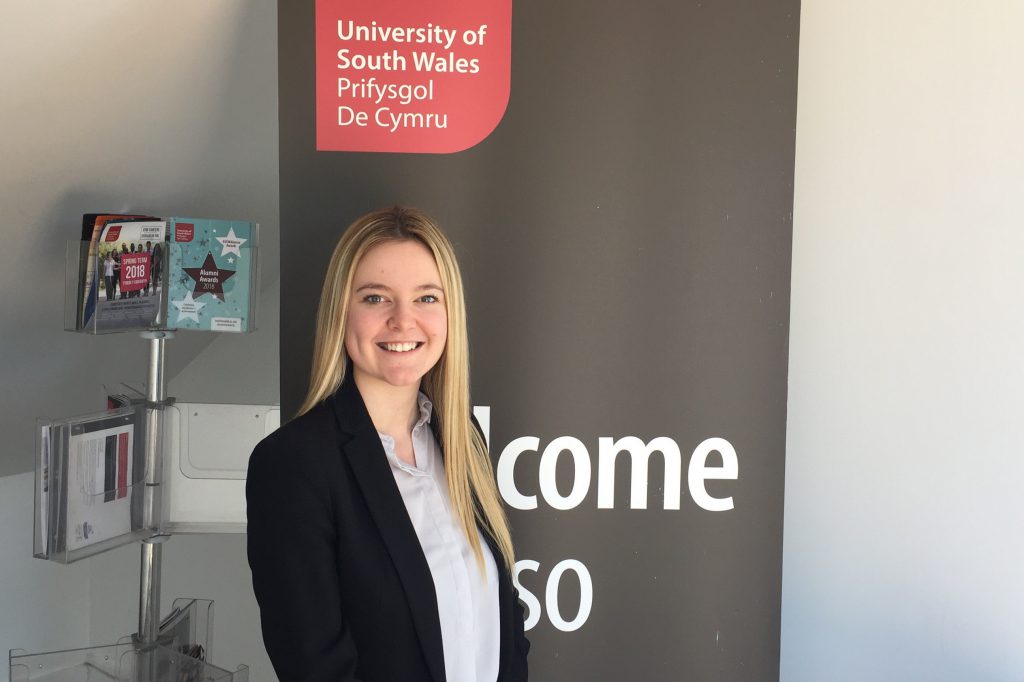Don’t panic! and other lessons in crisis management
About the author
Our guest authors are what make PR Place such a vibrant hub of information, exploration and learning.

Traditional learning methods such as lectures and exams are still relevant but they fail to stimulate a student’s creative flair or showcase their full capabilities, writes Laura Davies.
In order to prepare students for today’s highly competitive job market, universities are having to develop more innovative and varied teaching and learning techniques than ever before.
The interactive assessments and tutorials that I have participated in during my time at the University of South Wales have provided the opportunity for more introverted students, like myself, to find their voice and understand their full potential.
If I had not been put in these situations, it is unlikely that I would have spoken up or engaged in any of the in-class discussions, due to a lack of self-confidence. The USW Business School has placed a large emphasis on employability skills, as they understand what is expected of today’s graduates and strive to integrate a variety of different assessments and learning techniques into the course, which challenges students and provides them with realistic view of the business world.
During my third year at university, I was required to take part in a PR crisis simulation as part of my Public Relations and Reputation Management module. The simulation was based on the crisis scenario of the Fyre Music Festival which was scheduled to take place in the Bahamas in 2013 but was cancelled due to poor event management and inadequate facilities for festival-goers.
Before the simulation, we were assigned to a team of around five to six students, all of whom were in a same grade boundary, which benefited us as I know from my experience of groups projects that you will always have those who don’t pull their weight but still manage to reap the rewards of a high grade. But the truth is that in the real world of work, you’re not able to choose who you work alongside and that’s why it’s important that universities encourage students to mix with others outside of their friendship groups.
At first, I was very sceptical about the value of the crisis simulation, as I contemplated its ability to reflect a real-life PR crisis situation. For example, we weren’t made aware of the company that we were hypothetically representing until the day of the simulation, whereas in reality if you were responsible for handling a crisis situation, you would already have prior knowledge of the company and its core values, which would better prepare you to deal with any crisis scenario should it arise. This is something that I believe the university should rectify in the future, maybe not so much telling the students the name of the company as it may give away the crisis scenario (take BP for an example) but they could create a hypothetical company and scenario, which would avoid this problem completely.
The simulation took place in the university’s Hydra Minerva Suite, which is used as an interactive scenario-based and experimental learning environment, where students are exposed to a scenario via a mix of video clips, audio clips and written tasks. This suite is designed to test a student’s ability to make effective decisions and take the appropriate actions within a safe but realistic learning environment.
During the simulation, we were exposed to a high pressure and faced-paced situation, as we were required to the respond the evolving events of the crisis scenario using a range of PR tools including social media posts, press releases, internal memos and phone calls from journalists.
We had an experienced PR Practitioner present in the room observing us throughout the simulation, which I found to be quite intimidating, as I felt like I was in a real-life episode of The Apprentice. But as the crisis unfolded, there was so much going on that we all forgot he was in the room with us.
Before the simulation, I had always thought that I worked well under pressure but it definitely tested me, as it was very overwhelming and unlike anything I have experienced before. Just when we thought that we had dealt with one situation, the crisis would take another turn for the worse, which tested our ability to think on our feet and prioritise tasks. I realised how difficult it is to make effective decisions when you are faced with an evolving situation and I suppose one thing that I know now is that I should always expect the unexpected!
We would often read and discuss case studies relating to a number of PR crises such as Perrier and Carnival Cruises in our tutorials, as its essential for students to have prior knowledge and an understanding of crisis communications, but in-class discussions do not prepare you for the tension and chaos of actually dealing with a crisis situation in real life. This is why I believe that allowing students to engage in active learning through a crisis simulation is so worthwhile, as it is as close as you will get to experiencing the real thing. I am also a firm believer that you learn more by doing and that’s why I believe that experiential learning is so effective and relevant for Universities to incorporate into their courses.
What I would say to anyone that has to take part in a crisis simulation is not to panic, I know that the whole situation may seem scary and unpredictable but just remember that you are in a safe learning environment and its okay to make mistakes.
Looking back, there are many things that I would have done differently if given the opportunity again but the whole point of experiential learning is that you learn by doing. Without reflection, you have no idea how you can improve in the future.